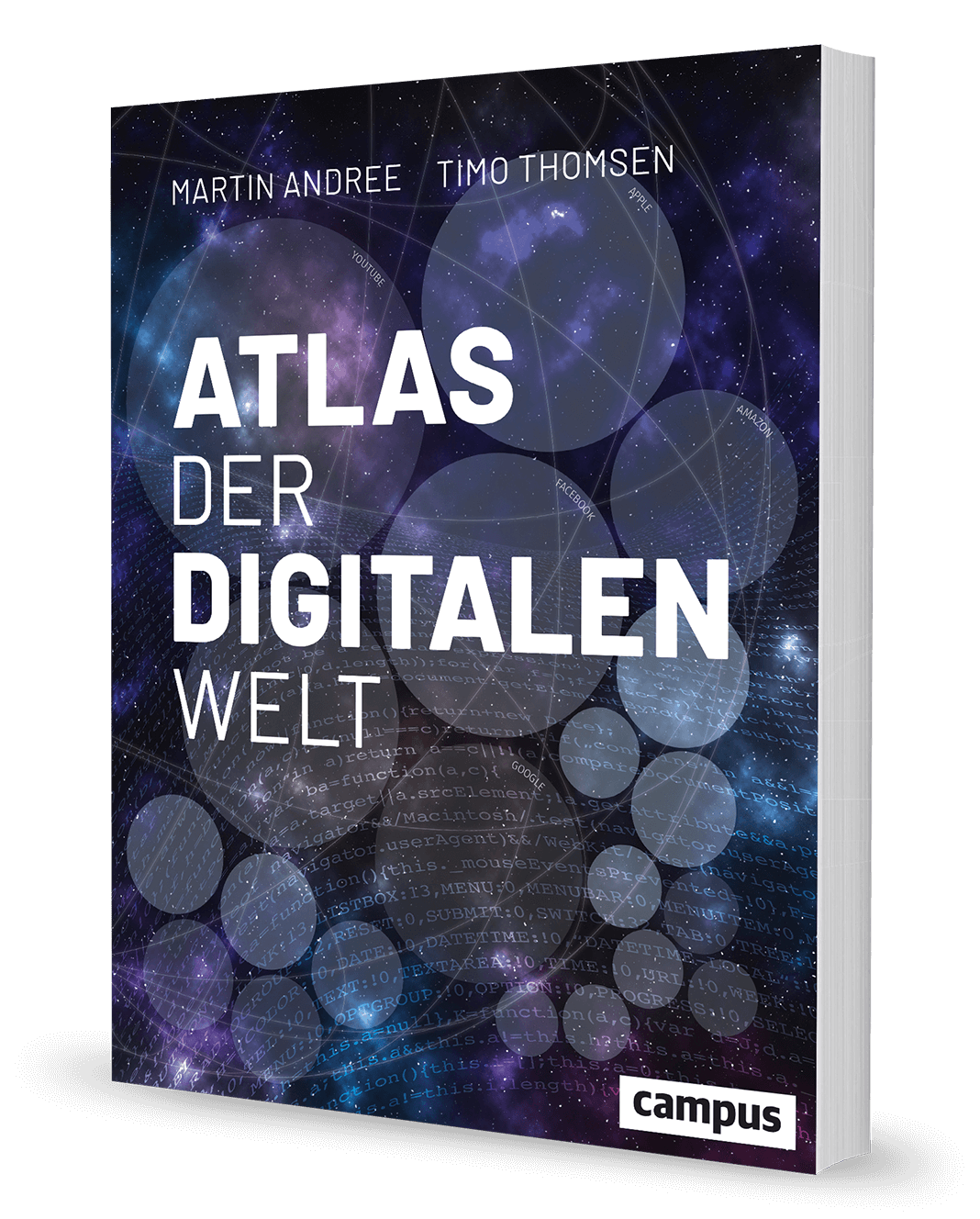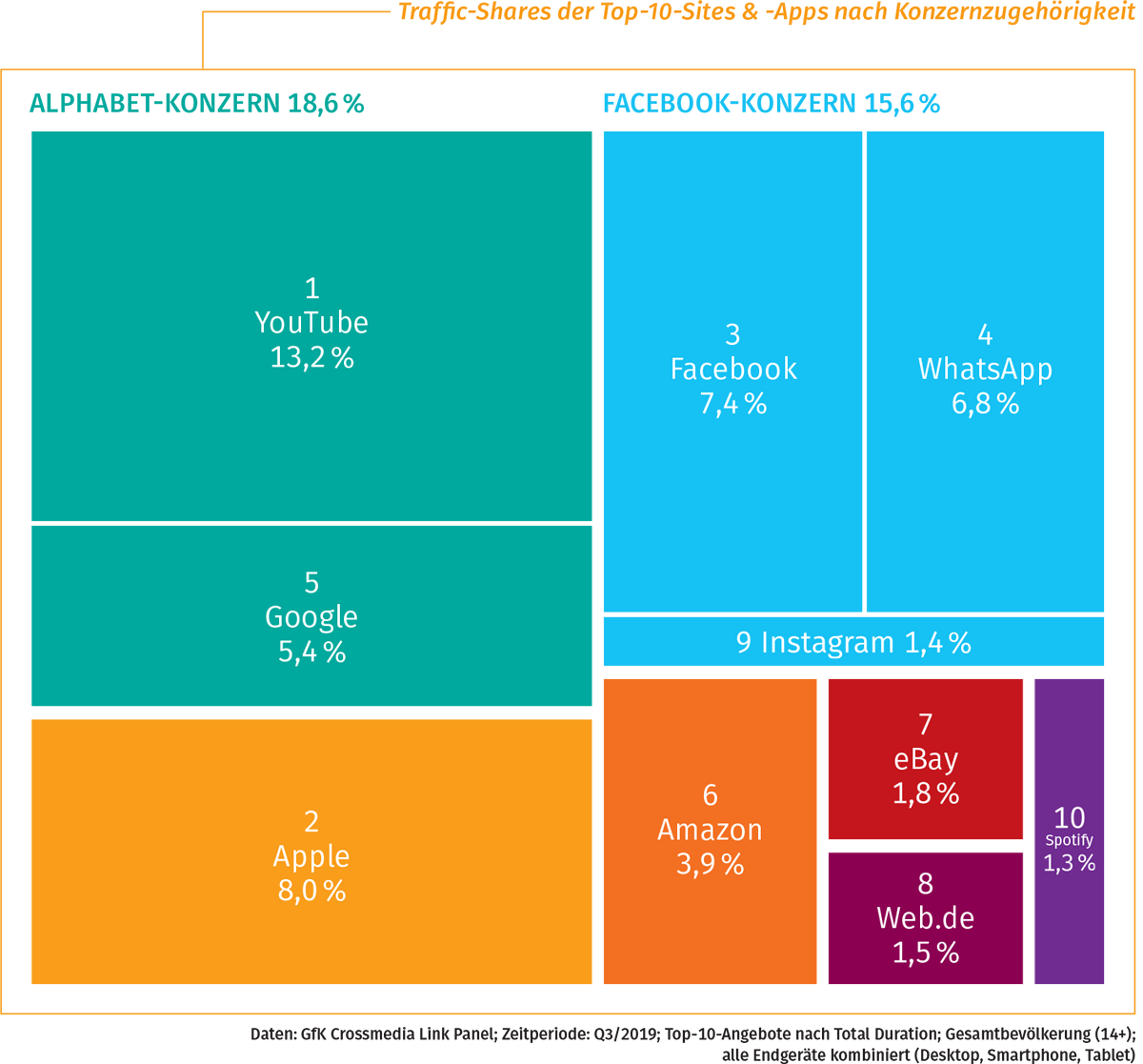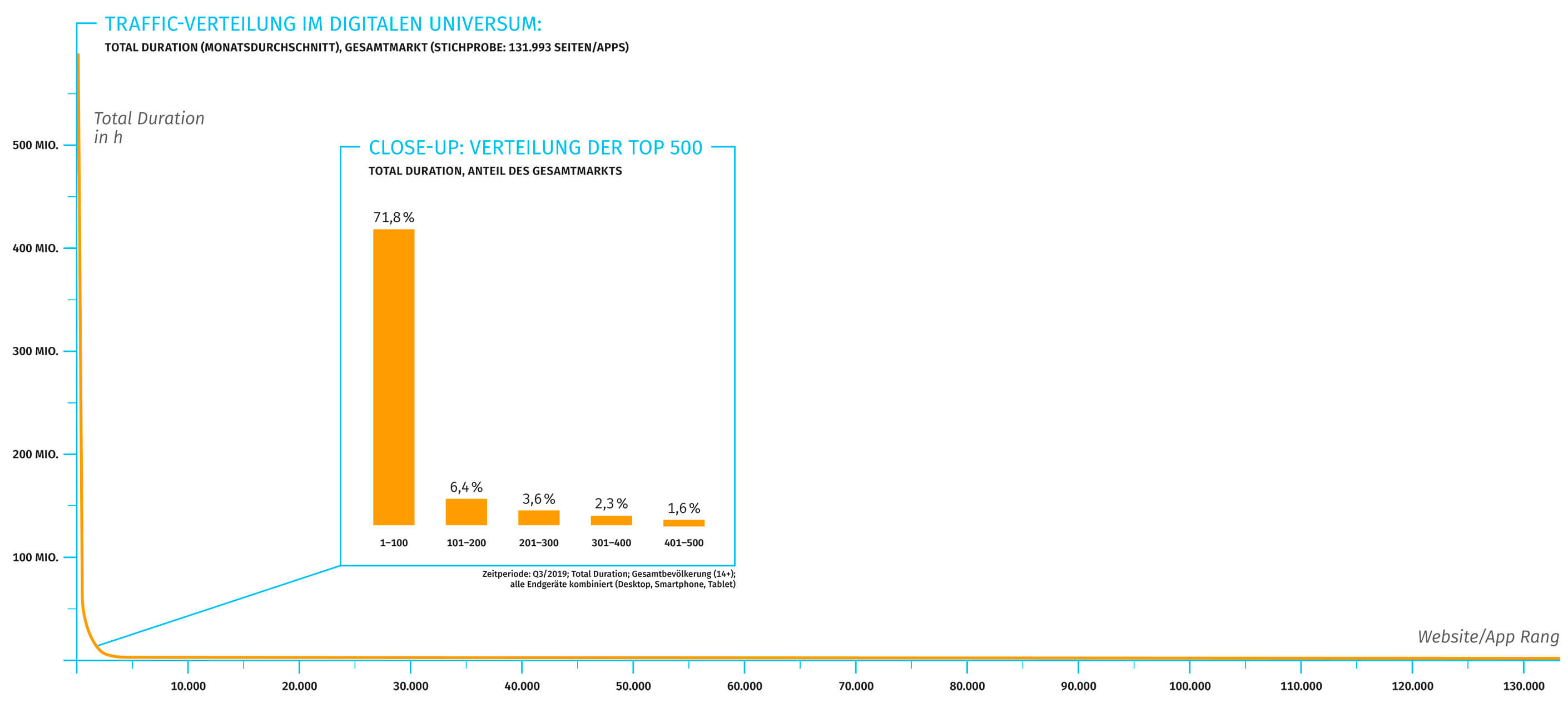

Book publication
Atlas
of the
Digital
World
In bookstores as of September 16th 2020
IN A SNAPSHOT…
- First 360° representation of the digital universe
-
New factual basis for key social issues, including …
- Dominance of the large digital corporations
- Consumption of political news via digital channels
- Social significance of social media platforms
- High-quality scientific data, publicly accessible for the first time
- Clearly written, vividly illustrated (more than 150 infographics)
SUMMARY
The first 360° survey of the digital universe
Even if it sounds unbelievable: To date, there has been no coherent representation of digital media usage. This book closes this gap for the first time - based on scientific data of highest quality.
Why do we know so little about the digital world?
Anyone who deals with the various aspects of digital media lives in a paradoxical world: there is no field in which more data, information and statistics exist. But at the same time, we always know isolated, tiny particles and fragments that cannot be integrated. The problem is that we don't have a holistic view of digital media usage. There is no coherent representation of digital media based on one and the same database – and considering the various end devices used by the people (desktop or laptop, smartphone, tablet).
The reference measurement for digital media use
For the first time, the Atlas of the Digital World, provides a general frame of reference that maps all the different digital offerings (e.g. Facebook, WhatsApp, Google, etc.), activities (e.g. content consumption, shopping, search, social media, etc.), the different end device categories (desktop, smartphone, tablet) and the different user profiles in a 360° representation.
This analysis was made possible by the evaluation of the GfK (Society for Consumer Research) CrossMedia Link Panel, which records the real media usage of 16,000 people in Germany (i.e. the book’s findings are not the results of surveys, but document real usage behavior).
For the first time, this type of data is being made available to the public here. The outcomes and analyses are clearly presented and illustrated with descriptive infographics, making the content understandable and accessible to everyone.

Overview of important new findings
The analysis of this data provides far-reaching new insights and surprising discoveries. Here are just a few examples:
- The concentration of total traffic on just a very few corporations is extreme and significantly greater than suspected: Google (or Alphabet) and Facebook alone bundle more than a third of the total digital attention of all digital players combined; from millions of different offerings, the top 7 players generate more than 50% of all digital traffic.
- The exact extent of this concentration is calculated scientifically - on a scale between 0 (equal distribution - all players generate the same amount of traffic) and 1 (one player attracts all the traffic, all other players in the market have zero traffic), the value for digital concentration is 0.988 (gini coefficient).
- The growth in digital media usage is most dynamic where it is least expected, namely among older users (age 60+). Here, the increase is more than 5 times higher than in the overall market.
- The usage time of instant messaging is surprisingly high. WhatsApp achieves a similar level of duration as Facebook. Facebook, on the other hand, is losing significant usage - the deficit cannot be compensated for even by the dynamic growth of Instagram within the Meta ecosystem.
- TikTok is growing rapidly and has more than quadrupled its usage duration within a year.
- The importance of blogs is so low that it can often hardly be measured empirically. Only around 14% of the German population use blogs at all. These users then spend an average of less than 2 minutes a month on such offerings.
- Even big brands do not manage to build up significant traffic on their own domains, even after decades of investment.
- GenZ is less political than expected. The young people use significantly fewer political domains than the rest of the population.
Overall, almost all analyses show that the usual market considerations based on reach are misleading. The decisive factor is the consideration of the duration of use, which is holistically measured and published here for the first time.
Fact is: Only the real duration of use measured here can determine the "stickiness" of the various digital offerings. Here is an example: although Apple achieves "only" 44.5 % penetration in terms of reach, it can attract such intensive use that it is one of the biggest players in the overall market, another surprising finding (8.0% of total usage time!).

Detailed empirical findings in relation to current social debates
The Atlas of the Digital World makes a key contribution to current debates, such as:
- Quantifying precisely the supremacy of the large digital corporations
- Elimination of fair competition under the conditions of digital markets
- Consumption of political news via digital channels
- Significance of social media platforms for the public
- Problematic lack of public access to data inside the walled gardens of Big Tech
The problem with these debates is that they are often conducted based on insufficient facts and data. Here is an example: How can we rationally assess the issue of the overwhelming power of large digital corporations if there is no precise knowledge of the exact extent of this concentration?
The Atlas of the Digital World is intended to provide the first 360° orientation through comprehensive, scientifically measured data. At the same time, the publication is only the first step towards providing the public with such a reference framework. We can only hope that in the future, additional partners from the digital economy will make their data available in order to further improve the precision of the observations and measurements in the public interest.
TABLE OF CONTENTS
I. Measuring the digital universe 17
- The digital universe as a whole: distribution and concentration 18
- Digital media: usage in our society 38
- Market: How is the digital universe growing? 43
- Devices: Access to the digital world 52
II. Activities: What do people do in the digital world? 61
- Overview of the various activities in digital media 62
- Video and audio use 67
- Gaming 81
- Communication and social networking 90
- News, information; web search; on-site search 94
- Shopping, auctions; banking, money; product/price comparison; file sharing, web space 105
- Pornographic content; gambling, betting 117
- Conclusion: All activities at a glance 123
III. The sphere of social media 133
- Overview: The dimensions 135
-
Facebook and Instagram 148
- Facebook 148
- Instagram 153
- YouTube as a hybrid 157
-
The territories of the challengers 163
- Pinterest 163
- Twitter 168
- Reddit 170
-
Disruptive platforms for young target groups 173
- Snapchat 173
- TikTok 178
- Tumblr 182
- Jodel 184
-
Career networks 186
- XING 187
- LinkedIn 188
-
Instant messenger services 189
- WhatsApp 189
- Facebook Messenger 191
- Conclusion: Social media at a glance 193
IV. Deep dives: areas of particular interest 199
-
The "Big 4: Meta, Alphabet, Apple, Amazon 200
- The Meta Group (Facebook, Instagram, WhatsApp) 201
- The Alphabet Group (Google, YouTube) 207
- The Apple Group 217
- The Amazon Group 221
- Conclusion: The "Big 4" at a glance 228
- The sphere of blogs 231
- How politically interested is GenZ? 236
- Big brands on the web 239
- Love on the net? Dating platforms 244
The most important thing at the end: Our digital world knowledge 249
- How digital media construct our world 250
Appendix 260
- Method, approach and limitations of this study 261
- Notes, references, further reading 264
Video of the presentation @ DMEXCO
Contact
If you are interested in interviews, guest articles etc., please contact Campus Verlag,
Margit Knauer (Pressesprecherin)
knauer@campus.de
Phone: +49 (0)69 97651621


